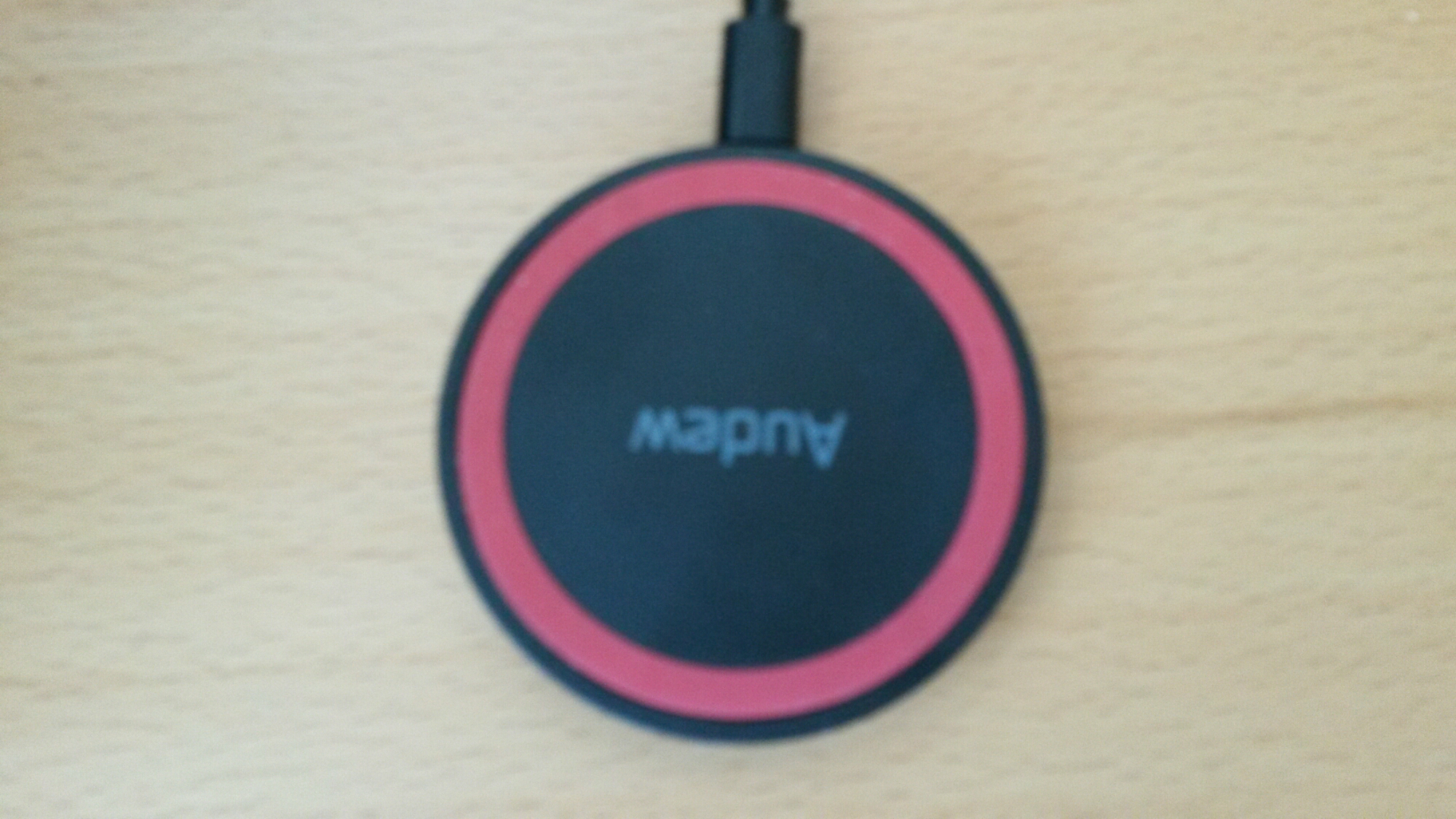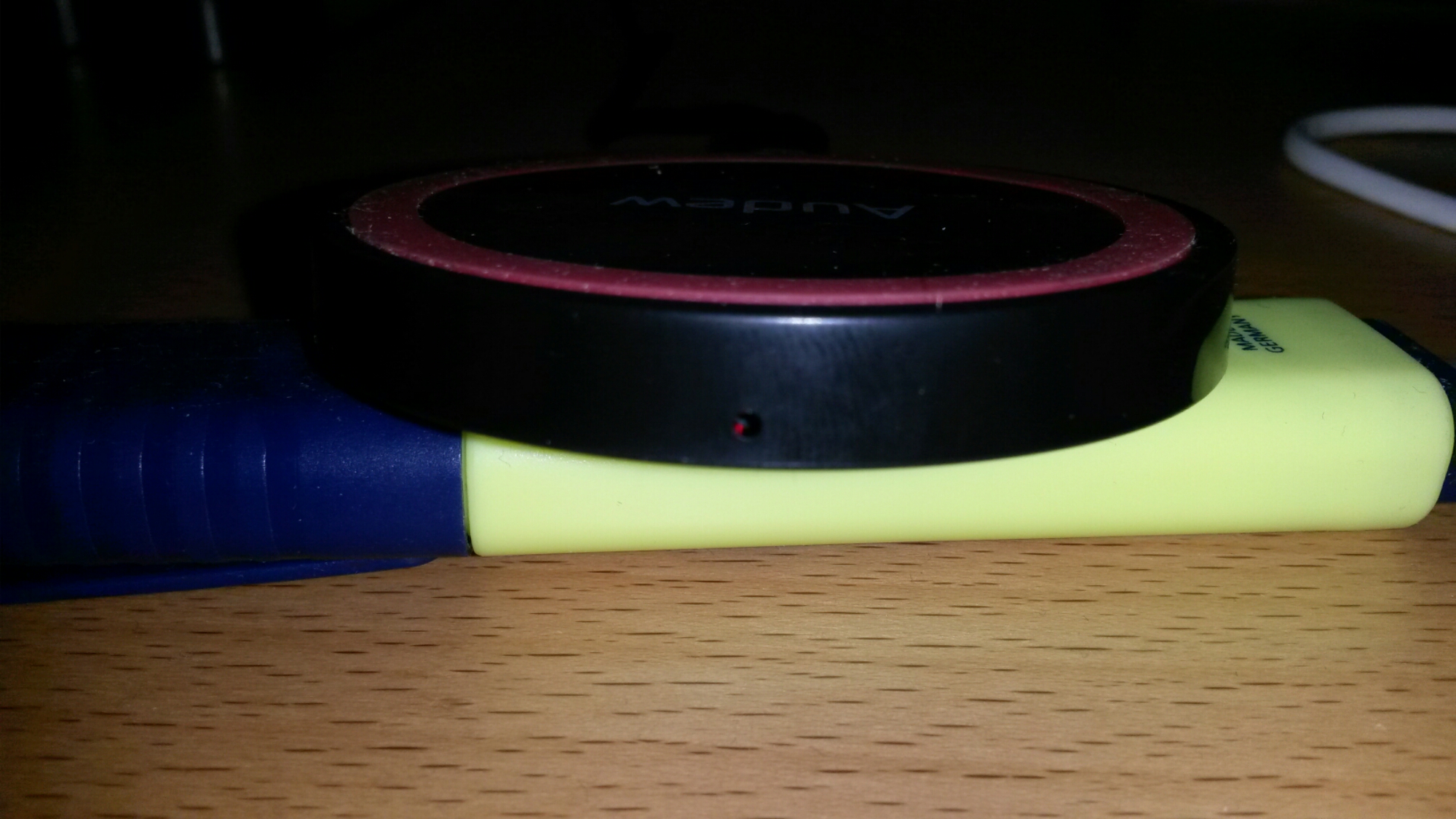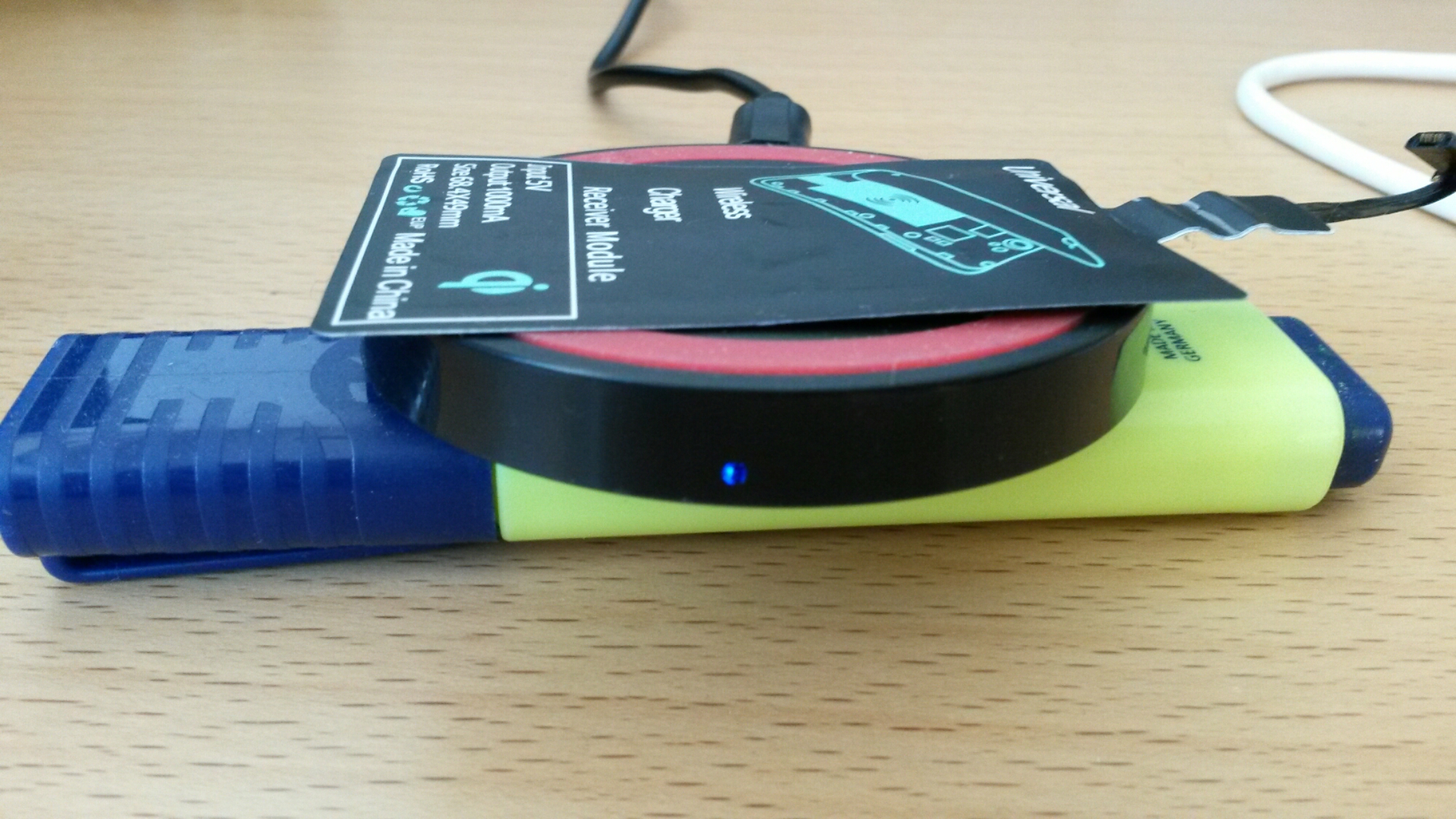I found out that I need more chargers than my Ikea lamp with Qi charger. I planned to try how well less expensive Qi chargers work, so I bought AUDEW Q5 Universal Qi Wireless Charger Charging Pad Transmitter. Banggood sells that at cheap price less than 4 Euros. So it is really cheap, and hopefully works well. Here is picture of AUDEW Q5 Universal Qi Wireless Charger Charging Pad Transmitter.

When I connected the charger bad to smart phone USB power supply, I got it working well. The phone charged well, although the pad seems to be pretty sensitive to where in it you put your phone (put it to slightly off the center and it does to charge).
Specification:
Color: Black, White, Blue, Red, Green, Yellow, Orange
Input: DC5V, 1500mA
Output: 5V, 1A max
Size: Approx. 6.9×6.9x1cm/ 2.72×2.72×0.39″
Wireless charger for smartphones under the QI-standard.
Easy to charge your phone without cables, just put your phone on the charging plate.
Operation: Indication LED is red when there is nothing to charge

It turns blue when you have the receiver placed on top pf the charger (does not matter if it is connected to smart phone or not)

This Qi-charger worked well. The build quality seems to be OK. It doesn’t get very hot. Charging was somewhat sensitive to location (I think somewhat more sensitive than Qi charger in IKEA lamp). The charger worked when the phone is placed on the pad or is few millimeters up from it.
It charger my smart phone well (approximately at the same speed as the original USB charger that came with the phone. My smart phone too around 600 mA charging current like it took from the original charger. So the charging speed should be pretty much the same as with original charger.
Notes on testing: In the first tests I had some problems that charger for some reason starts to charge, then stops after some time and continues again. After some investigation I found out that the the charger pad needs 1500 mA at 5V, but the USB chargers I tried with it supplied less power (one had maximum 700 mA and other 1000 mA). When I replaced the USB charger with a model that promises to give put 2.1A 5V, the charger worked well all the time when the smart phone was nicely placed on the correct location. Not phone gets constantly charged.
Other minor issues that I found out is that after some days of used I noticed that the charger starts to make some faint noise when it charging the phone. In the office or normal daytime at home that is not an issue, but when it is next to the bed I could hear some noise on quiet room (compared to Qi charger in IKEA lamp it makes considerably more noise).
I was wondering what is the efficiency of the wireless Qi charger system. So I had to test it. I did test with two USB charge meters: one connected to power input of that Qi charger pad and other placed between the Qi receiver and smart phone. I found that the USB charger and and receiver combination had around 65-70% efficiency. This means that around one third of the power is lost in the wireless charging process. The efficiency is around the same range as with other Qi chargers, for details on that check Qi wireless power efficiency presentation.
Even with some of those minor issues, I would say this is very good value for money. The other Qi chargers I have seen cost several times more. This is the cheapest Qi charger pad I know and it does what it promises to do well.
1 Comment
Tomi Engdahl says:
Playing about with a couple of QI inductive chargers and receiver.
https://www.youtube.com/watch?v=p-so2Pm7lWI
I was wondering how efficiently the inductive phone chargers worked, so I got a couple of modules off ebay and a receiver plate to take to bits. They do seem to communicate with each other, rather than just pumping current into any coil that comes near.
The transmitters seemed to use what appeared to be a microcontroller controlling an H-bridge driver that then drove the coil via a paralleled cluster of capacitors. The receiver had a modest amount of circuitry in it with what appears to be a dedicated QI receiver chip, possibly by Texas Instruments.
Efficiency was 50% at best and got MUCH worse as the coils were parted.
Both the transmit and receive coils are both backed by a layer of ferrite material. In the case of the transmitter it was a hard ferrite disk and on the receiver it was a thin brittle layer sandwiched between two layers of plastic and with the coil stuck to the front.